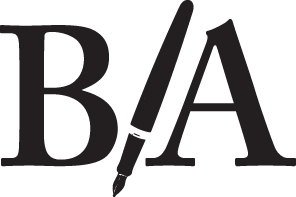Productivity Patterns: The Hard Work of Reprioritizing Projects and Mindset
We've sifted through the mess. The piles are under control. We know there are no more ticking time bomb‘s in that stack of rubble under the desk.
Now it is time to reprioritize.
Re-prioritizing in two areas.
1. Re-prioritize Your Projects.
I like David Allen’s definition of a project.
“Project: Any outcome that requires more than one step.”
This means a project can be anything from getting an oil change to writing a novel (Both are on my list). While this may seem complex, for me, it simplifies matters greatly. Once projects are in place it’s much easier to put a timeline on things and figure out what needs to be prioritized.
Make a physical list of all projects that came out of the notecards. Then ask:
- Is this something I actually need to do? (If "no" - throw it away. Burn it. Never think about it again.)
- When do I need to do this?
- What is the next step I need to take to get this thing done?
That becomes a prioritized "to do" list. Keep it simple.
Arranging and prioritizing projects is actually the easy part. The difficult part is arranging and prioritizing personal mindset.
2. Re-prioritize Your Mindset.
I’ve spent some time this week working through some of my own thinking. Michael Hyatt's book “Your Best Year Ever“ has an exercise I found to be incredibly helpful.
Do an analysis of your thinking habits.
Hyatt pulls from a body of research related to scarcity thinking versus abundant thinking. This is not a simplistic appeal to "think positive." There is real research on how we limit our potential with the stories we tell ourselves. (I've talked about this before.) We all do a fair amount of self-talk. That self-talk is often limiting.
Here's the discovery process (suggested by Hyatt):
Take a sheet of paper and draw a line down the middle, from top to bottom. On the left write, "Limiting Beliefs". Then list them. All of them.
A few real-life examples:
I'm a failure at ...
I'm too old to ...
... is a pipe-dream. Why bother?
On the right side write, "Liberating Truths" at the top. Think well about the story on the left, and rewrite it. Re-tell it.
"Sure. I may not have been as a raging success at (this thing), but the experience is now mine. I've learned. I've grown. I know more than I ever would have otherwise."
"Age means life lived. That's not a detriment. That's a valuable asset."
"I am (this pipe-dream). Act like it."
The problem with limiting beliefs is that they are often seeded with a little bit of truth. Our frequent error is in embracing the kernel as the whole. There's more to the story.
There's always more to the story.
Prioritize your projects. Prioritize the bigger story.
